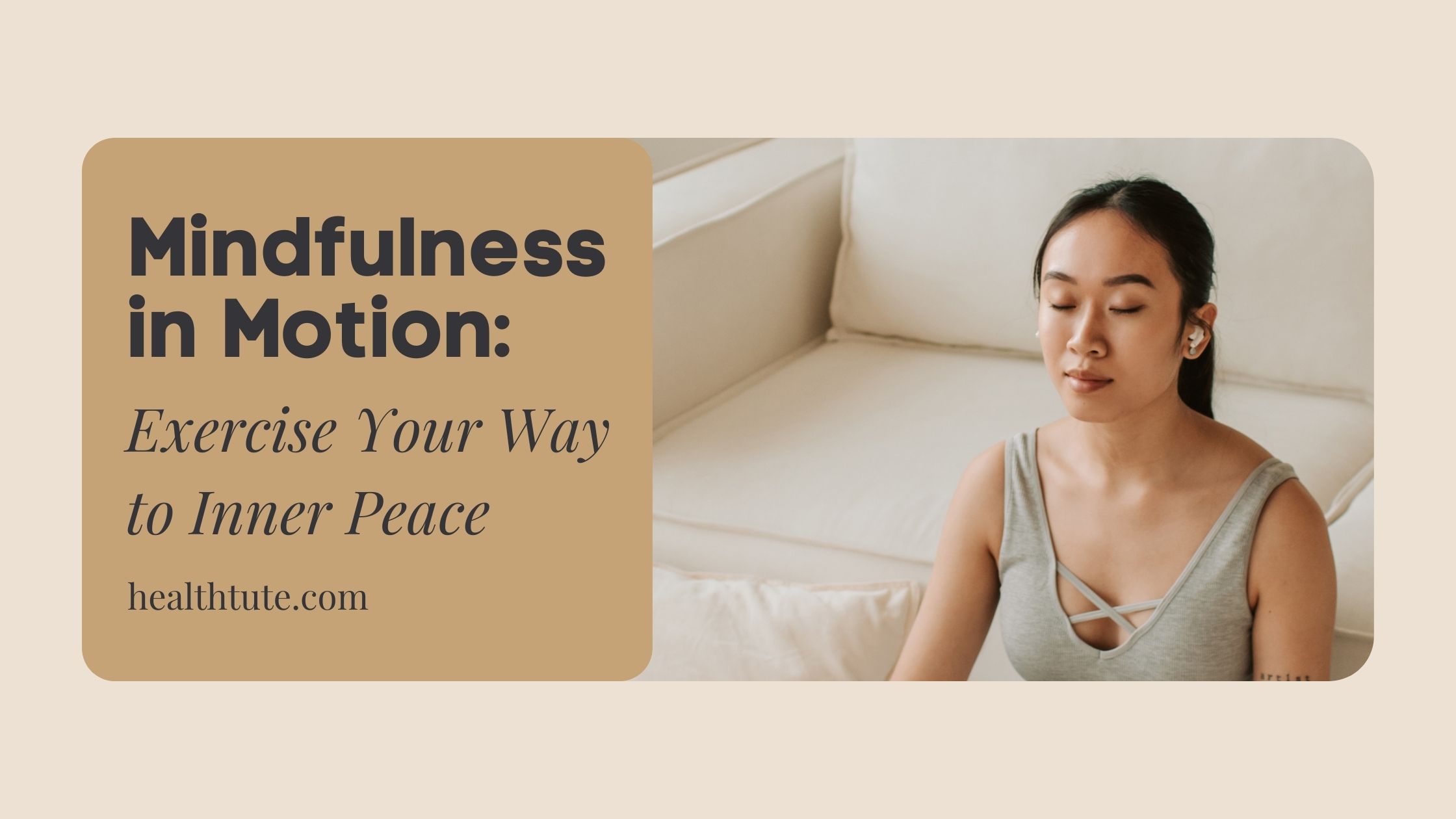In today’s fast-paced world, finding inner peace has become a challenge for many. The constant hustle and bustle of daily life often leave us feeling overwhelmed and disconnected from ourselves. Mindfulness, the practice of being fully present in the moment, offers a path to rediscovering tranquility amidst the chaos. In this article, we will explore the powerful combination of mindfulness and exercise, and how it can lead us to a state of inner peace.
The Connection Between Mindfulness and Exercise
Mindful exercise is the art of uniting the mind and body during physical activities. It involves being aware of every movement, sensation, and breath while engaging in a workout. This conscious approach to exercise not only enhances the benefits of the physical activity but also nurtures the mind’s serenity.
Benefits of Mindful Exercise
Practicing mindfulness during exercise can lead to a range of advantages. By focusing on the present moment, it becomes easier to let go of stress and worries. Additionally, mindful exercise allows us to appreciate the sensations of our bodies, promoting a sense of gratitude and self-awareness.
How to Incorporate Mindfulness into Your Workout Routine
Incorporating mindfulness into your workout routine doesn’t require any special equipment. It’s a practice that can be applied to various forms of exercise. Here are some simple techniques to get started:
Breathing Techniques
Begin each workout with a few minutes of deep breathing. Inhale deeply through your nose, feeling the expansion of your lungs, and then exhale slowly through your mouth, releasing any tension.
Mindful Movement and Body Awareness
Pay attention to your body’s movements and how each muscle feels during exercise. Avoid distractions and bring your focus back to the sensations of your body.
Mindful Exercises for Inner Peace
Certain exercises are particularly conducive to practicing mindfulness and nurturing inner peace. Let’s explore some of these activities:
Yoga and Meditation
Yoga combines physical postures with breath control and meditation, creating a holistic experience. Engaging in yoga and meditation can promote mental clarity and emotional well-being.
Tai Chi
Tai Chi is a graceful form of exercise that involves a series of slow and fluid movements. This ancient Chinese practice helps improve balance and encourages relaxation.
Walking in Nature
A simple walk in nature can become a mindful exercise. Pay attention to the sights, sounds, and smells around you. Feel the ground beneath your feet and the gentle breeze on your skin.
Swimming
Swimming allows you to focus on your breath and the sensation of water embracing your body. It is a soothing way to relax the mind while working on physical fitness.
The Impact of Mindfulness on Mental Health
The practice of mindfulness in motion has profound effects on mental health.
Stress Reduction
Mindful exercise has been shown to reduce stress levels significantly. By concentrating on the present moment, we can let go of worries about the future or regrets about the past.
Anxiety and Depression Management
Mindfulness in motion can also be beneficial for individuals dealing with anxiety and depression. The practice cultivates a sense of calm and fosters a positive outlook.
The Physical Benefits of Mindfulness in Motion
In addition to its positive impact on mental health, mindfulness in motion offers a range of physical benefits.
Improved Flexibility and Balance
Many mindful exercises, such as yoga and Tai Chi, enhance flexibility and balance, leading to better overall body coordination.
Boosted Immune System
Reducing stress through mindfulness can contribute to a strengthened immune system, helping the body defend against illnesses.
Enhanced Sleep Quality
A calm mind and relaxed body resulting from mindful exercise can improve the quality of sleep, leading to better rest and rejuvenation.
Tips for Staying Motivated in Your Mindful Exercise Journey
Sustaining a mindful exercise routine requires dedication and motivation. Here are some tips to keep you inspired:
Setting Realistic Goals
Establish achievable goals for your mindful exercise practice. Start small and gradually progress to more challenging activities.
Finding a Supportive Community
Joining a community of like-minded individuals can provide encouragement and accountability on your journey.
Rewarding Yourself
Celebrate your achievements, no matter how small. Treat yourself to something enjoyable as a reward for staying committed to your practice.
Conclusion
Mindfulness in motion offers a transformative path to inner peace. By combining the power of mindfulness with physical exercise, we can nurture both our bodies and minds, leading to a more balanced and harmonious life. Embrace the journey of mindfulness in motion, and you’ll discover a profound connection with yourself and the world around you.
FAQs
- Is mindfulness in motion suitable for everyone? Yes, mindful exercise can be practiced by people of all ages and fitness levels. It’s a flexible approach that can be tailored to individual needs.
- How often should I practice mindful exercise? You can start with a few minutes each day and gradually increase the duration as you become more comfortable with the practice.
- Can mindfulness in motion replace traditional therapy for mental health issues? Mindfulness in motion can complement traditional therapy, but it is essential to consult with a healthcare professional for serious mental health concerns.
- Are there any specific breathing techniques for mindful exercise? Deep belly breathing, also known as diaphragmatic breathing, is commonly used in mindful exercise to promote relaxation and focus.
- Can I practice mindful exercise indoors? Yes, you can adapt mindful exercises like yoga and Tai Chi to indoor settings. The key is to stay present and focused during the activity.


[…] 9. Practicing Mindfulness and Self-Care […]
[…] The Connection Between Music and Exercise […]